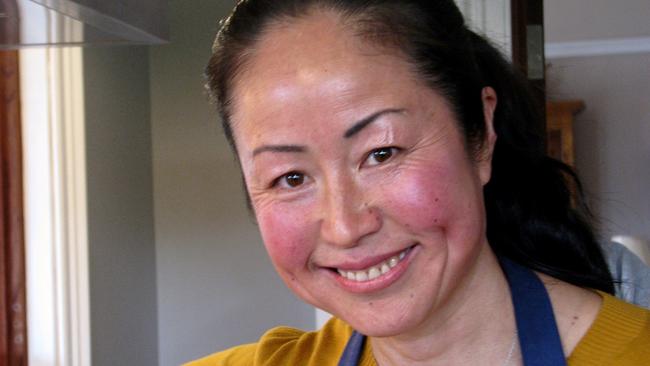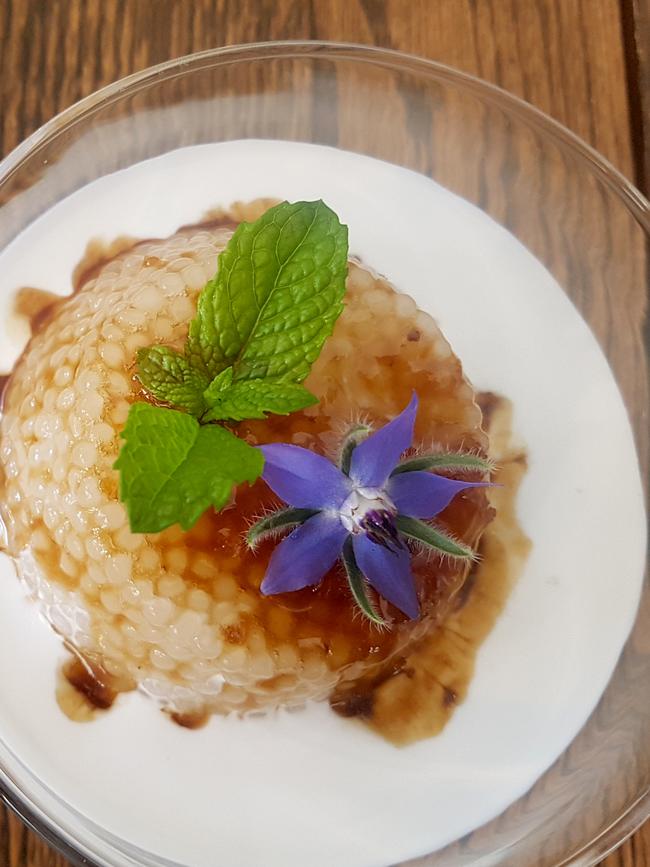Taste columnist Elaine Reeves discovers there’s more to tapioca than meets the eye
The proof of a good tapioca pudding is in the eating, writes ELAINE REEVES

Taste Tasmania
Don't miss out on the headlines from Taste Tasmania. Followed categories will be added to My News.
SHE couldn’t, said my friend, imagine any worse reason to attend a cooking class than to learn to make tapioca pudding.
But then she had been to a boarding school, and, as The Oxford Companion to Food notes of this member of the family of British milk puddings: “It is sometimes despised by the ignorant, that is to say persons who have no knowledge of how good they are when properly made.”
Sago and tapioca puddings were very popular in the UK in the 19th century, especially as nursery or invalid food, but have all but disappeared from the national diet now, along with that other milk pudding, junket. Remember that?
Frogs’ eggs was the common descriptor of sago and tapioca when I was a child, which could be a texture that repelled you. New Zealand food writer Lois Daish says the only other food “that fills your mouth with slippery balls of jelly” is perhaps caviar, and no one is knocking that.
Sago and tapioca may be past their peak in western cooking, but in Asia they still hold sway; their most recent incarnation being in bubble tea, which Wikipedia tells me, originated in Taiwan in the 1980s, but the inventor has not laid claim to the idea.
The class I attended did have an Asian flavour. In her home near Cygnet, Sally Ives taught that rare addition to a Chinese repast — dessert, making tapioca pudding and pumpkin cakes.
MORE ELAINE REEVES:
A word on sago and tapioca. Although these come from completely different plants — sago from the stem of the sago palm and tapioca from cassava, a tropical root crop. But in both cases, almost pure starch derived from the plants is put through a sieve to form pellets, and they seem to be interchangeable.
Checking my recipe books via eatyourbooks.com I found I had several recipes similar to Sally’s that variously used sago or tapioca. They all required pandan leaves, which can be bought frozen at Asian grocery shops (which also still stock tapioca pearls). A couple of recipes used the pandan leaves to flavour the coconut milk, but Sally uses it in with the cooking tapioca.
A Malay palm sugar, gula melaka, which is made from the flower buds of the coconut palm, is recommended. In fact Lois Daish in A Good Year and Diana Henry in How to Eat a Peach both call their versions of this dessert Gula Melaka.
Both those cooks also add a pinch of salt to the coconut milk. Martin Boetz, in his book Longrain, says in his glossary never to rinse tapioca pearls under water “or they will clump together to form a soggy mess”.
Several of those at Sally’s class said they had come to learn to avoid this problem. Sally’s solution is to stir a whipped egg white through the cooked tapioca. I never went to boarding school, but I am sure it was nothing like this:

SALLY’S TAPIOCA PUDDING
Ingredients
1 cup of pearl tapioca
A few pandan leaves
2 to 3 litres of water
1 egg white
100 to 150g dark palm sugar (preferably gula melaka), grated or shaved
400ml coconut milk
1. Day before, or early, heat coconut milk on low in a small saucepan until just below boiling. Switch off and leave to cool. Best refrigerated before serving.
2. Add water to a large pot and bring to boil. Drop in pandan leaves and shower in tapioca seeds. Stir to separate seeds. Keep cooking until the tapioca starts floating to the top. When it looks translucent, have a taste of the seeds. It is ready when the centre is no longer hard, but could still have a speck of white. It should take about 10 minutes.
3. Rinse the cooked tapioca in cold water to remove any excess starch. Remove the pandan leaves.
4. Beat egg white till stiff then add to the tapioca and mix thoroughly. Place tapioca into individual moulds or a bowl. Cover and chill until set.
5. In a small saucepan add gula melaka with a few drops of water and simmer until sugar dissolves.
6. To serve, turn out tapioca from its mould into a bowl. Pour a generous amount of coconut milk on top, and then a tablespoon or two of gula melaka.
To get details of upcoming classes, which include a lunch of what has been demonstrated and more, email: sallypixies@hotmail.com
MORE ELAINE REEVES:


